© 2025 Galerie SIT DOWN – info@sitdown.fr – Tél : +33 (0)1 42 78 08 07 – 4, rue Sainte-Anastase – 75003 Paris – France – Ouverture du mercredi au samedi de 14h à 19h et sur rendez-vous.
NEWSLETTER







In Japan, in the Nagano region, there persists the legend of a malevolent creature, part demon (oni), part bear (kuma). The Onikuma is a gigantic bear capable of walking on its hind legs like humans. It is said to possess exceptional strength, able to move boulders that ten men together could not push. Legends say that it sometimes descends from the mountains at night to abduct horses from villages, which it then devours in its cave.
In these snowy forests, I decided to embark on a photographic quest in search of the invisible presence of this mythological animal using scientific imaging techniques. By overlaying images captured with the technical processes of night cameras to capture the fleeting passage of the animal at night and using thermal vision to record the heat waves emitted by its body, I sought to create a landscape that makes accessible what our eyes cannot see. Thus enabling a revelation of the invisible, an encounter with this mythological animal.
Onikuma immerses us in these mysterious forests, in landscapes at the boundaries of the invisible, the imaginary, and the unreal. Utilizing scientific imaging processes in landscape photography, this approach allows us to apprehend reality in an unusual way, making visible other realities. In this project, photography is a construction game, a place of experience that transcends realism and the desire to imitate appearances in order to render the invisible perceptible.
Florian RUIZ
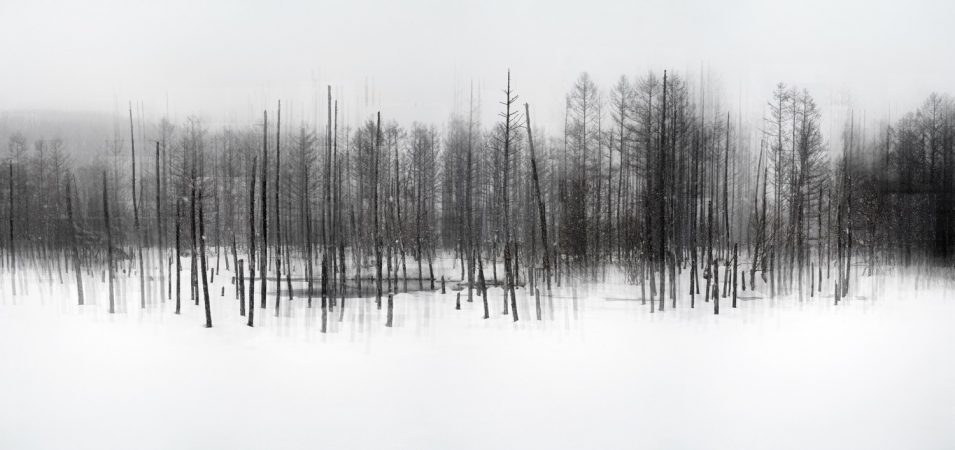
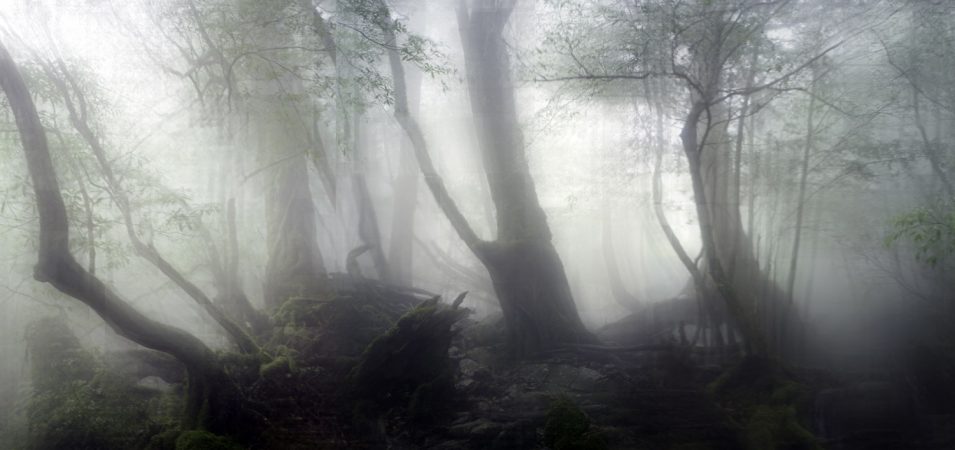
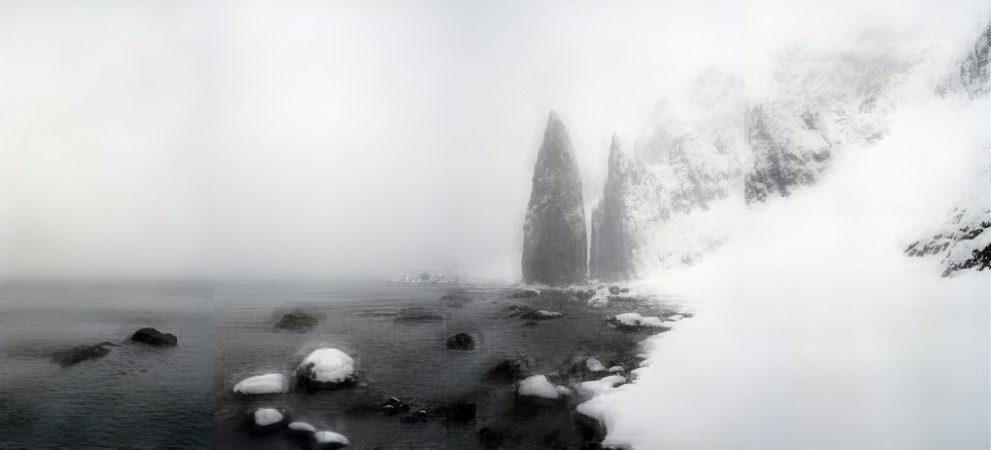
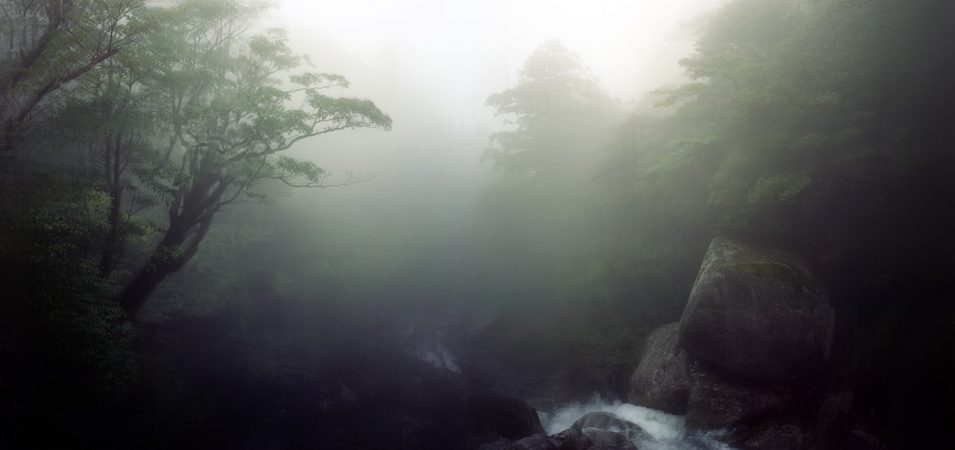
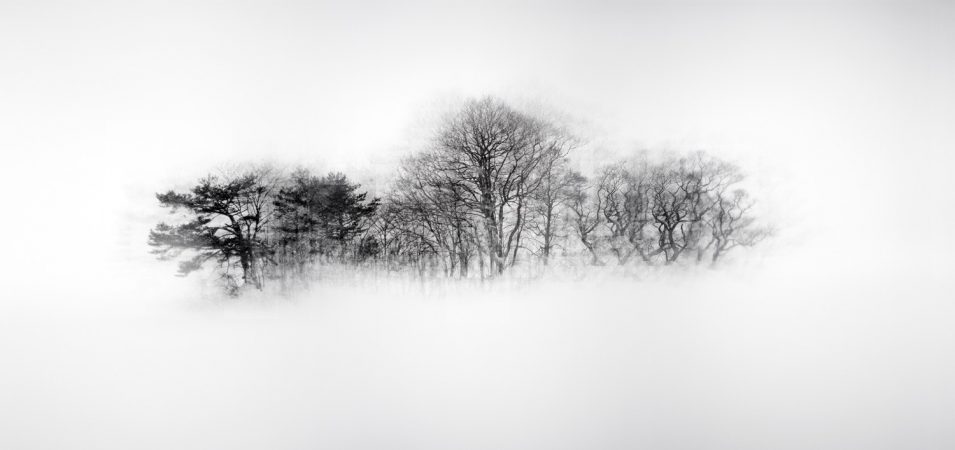
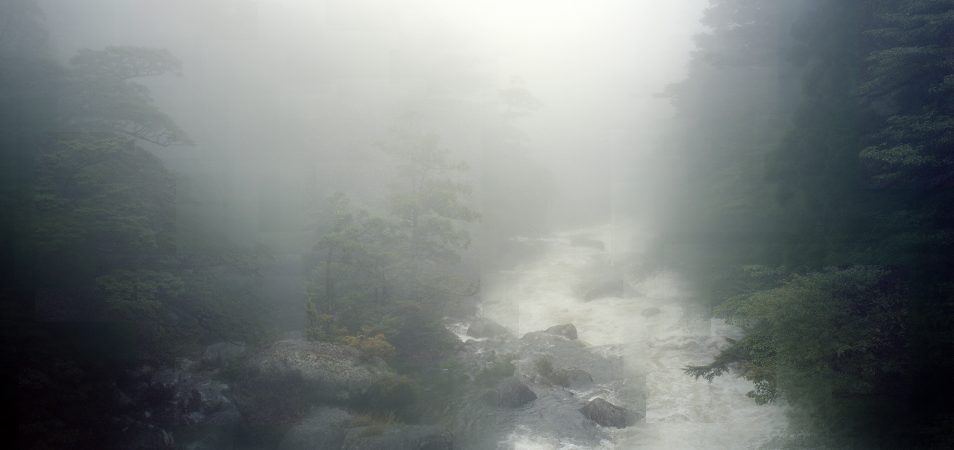
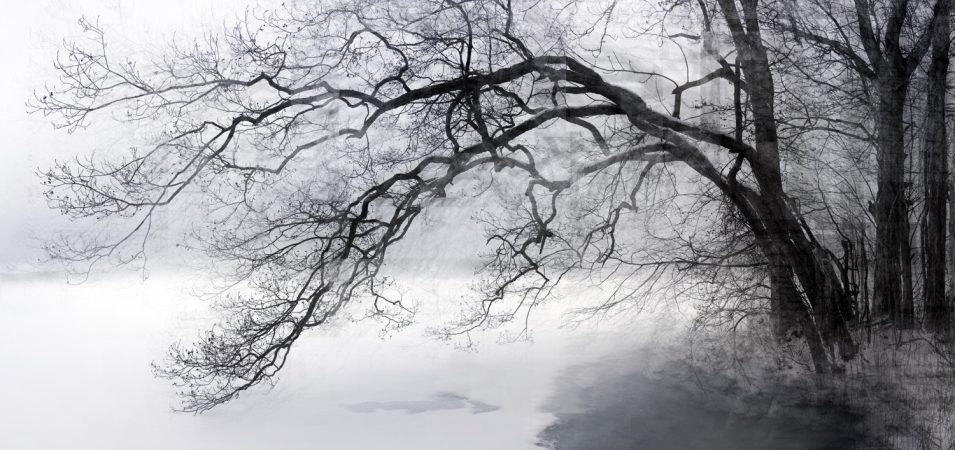
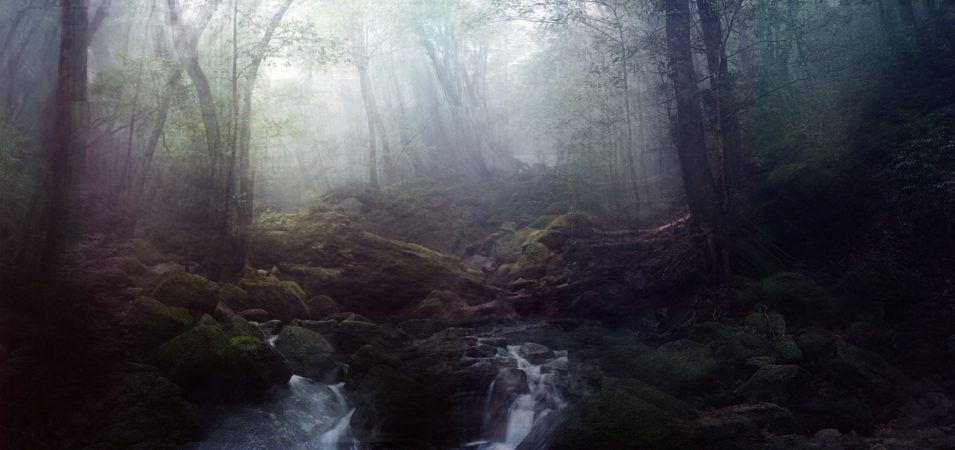
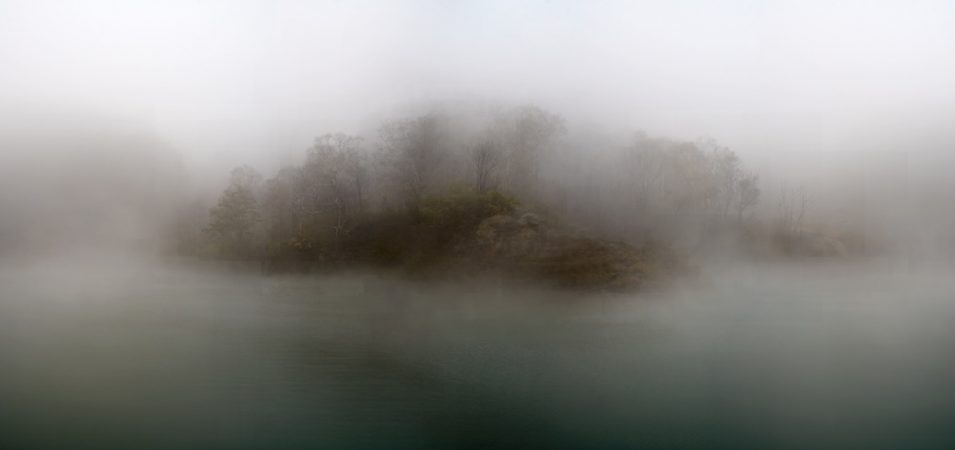
Shamanism in Japan is still very present in some regions, especially on the island of Hokkaido. This religious thought is based on animism and recognizes the existence of a soul in all living beings, objects, phenomena and natural elements called “kamui”. Shamanism has a dualistic representation of the world. The visible, daily, profane world, and the other worlds: the world of the gods, the spirits, the ancestors… The shamanism does not consider these worlds separated and supposes the possibility of establishing passages with the other world.
In these regions impregnated with animist thoughts, Florian Ruiz wanted to imagine a shamanic landscape, a floating, undecided world. He wanted to reveal a possible world, a landscape where the different spaces of reality and shamanic thought intermingle.
Using a digital process, Florian Ruiz created a landscape where these worlds are superimposed, where forms evaporate and sometimes reach abstraction. From this moving world are born landscapes where real breakthroughs, as we imagine them, can appear.
In this work, he wanted to question the representation of the real and the invisible in landscape photography by invoking what is destined for the imagination and what is destined for the eye.
The title of each photograph corresponds to the geolocation of shamanic space.
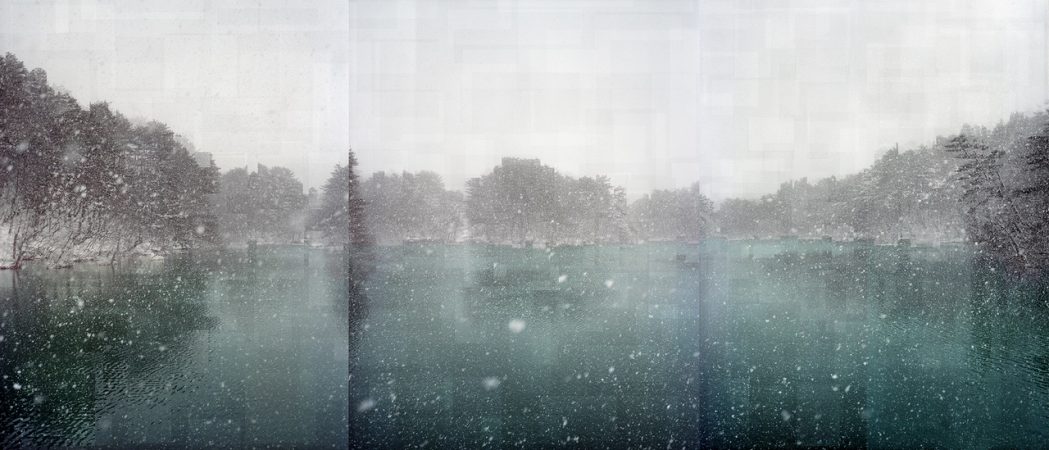
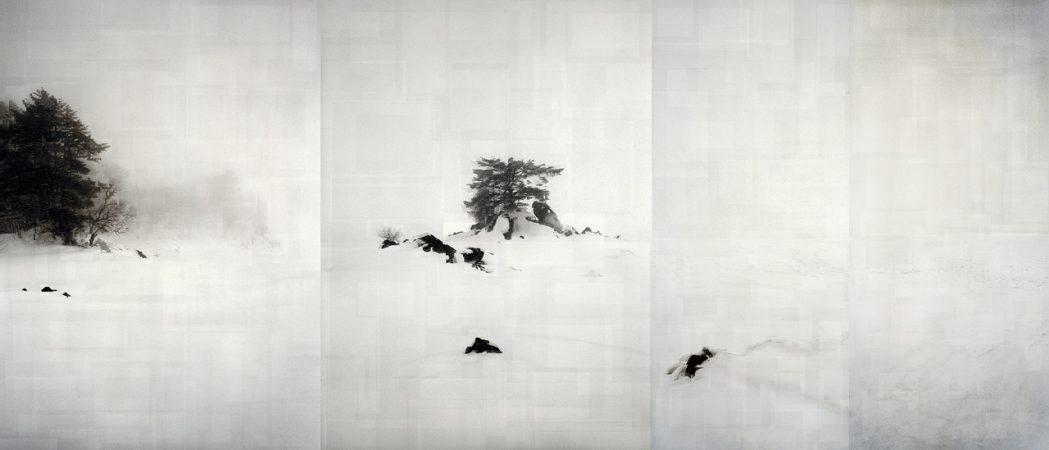
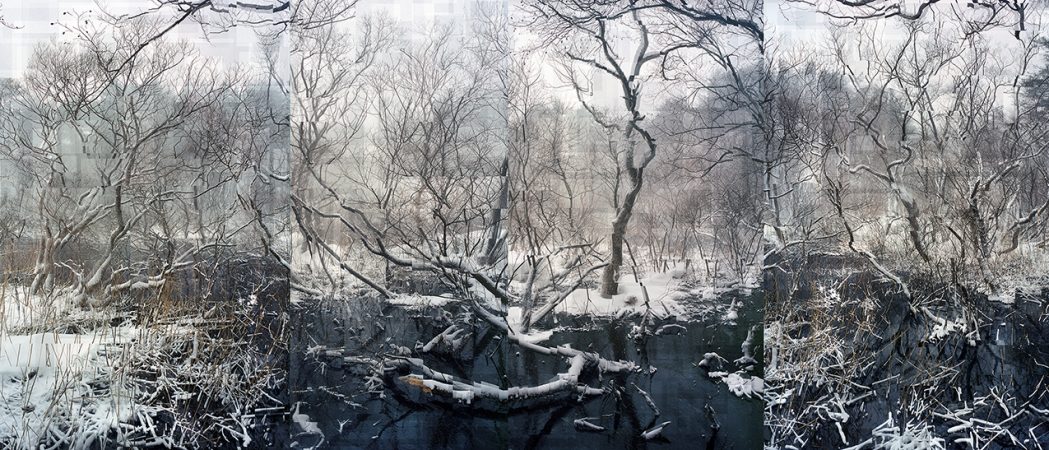
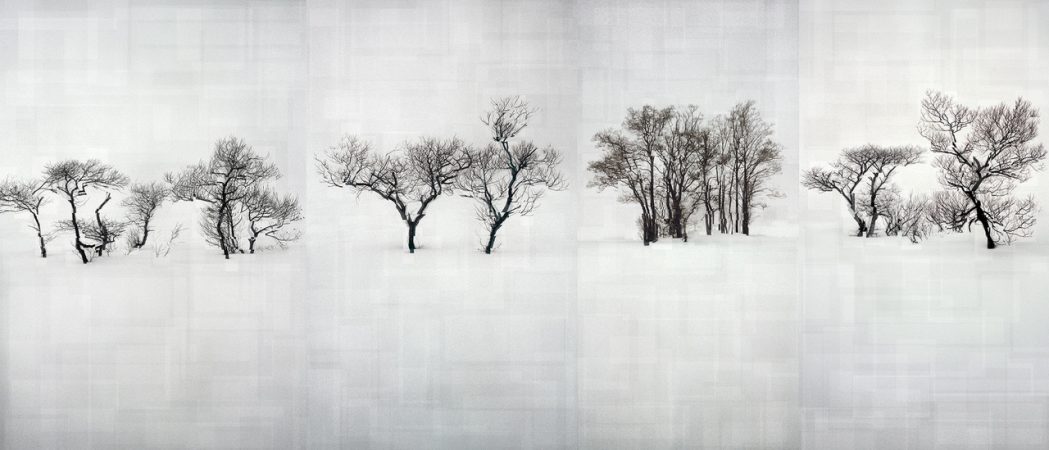
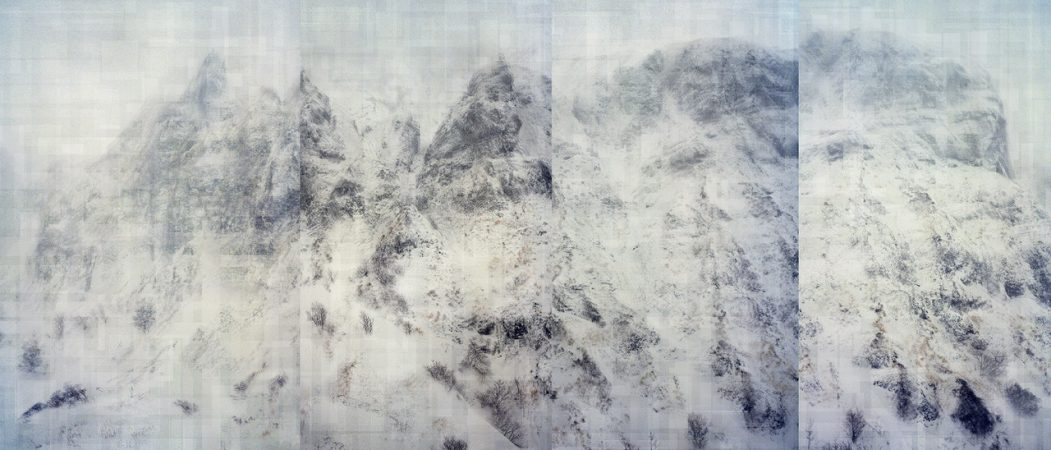
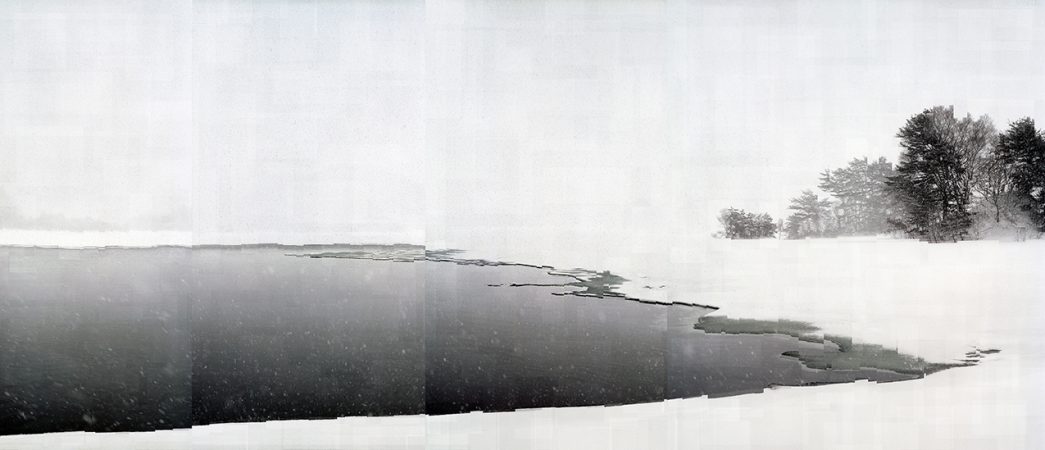
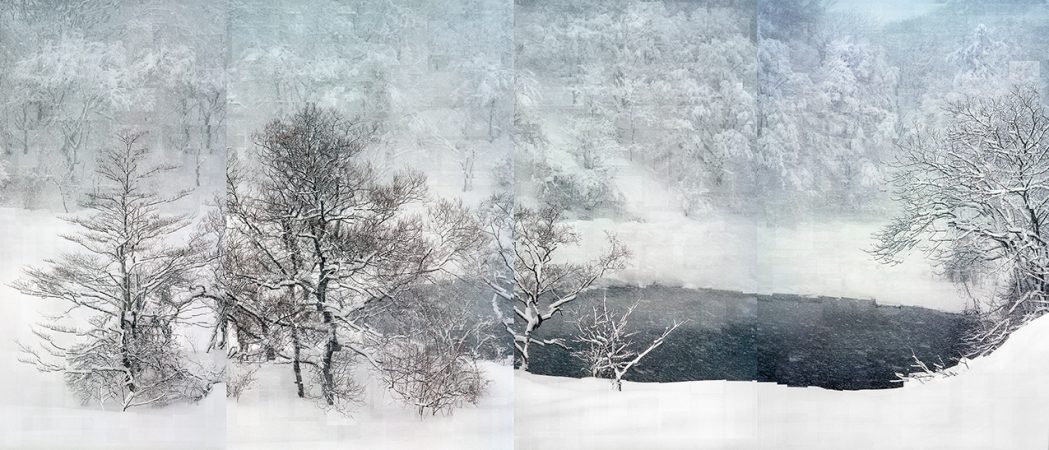
In his work, Florian Ruiz undermines a form of tyranny of the visible and, thanks to superimposed images, gets landscape views made of broken perspectives and visual palimpsests that meets the precepts of Far Eastern aesthetics, where the visible is a transient state generated by the undifferentiated background. Far from weakening the medium, these heterogeneous practices allow to revitalize our link with the world and its realities.
Héloïse Conésa (curator for contemporary photography in the Prints and Photography department of the BnF).
In the snowy landscapes of the heights of Fukushima, I captured the invisible pain of radiation. Inspired by the drawings and the artwork of Utagawa Hiroshige’s Japanese engravings, I hoped to capture the fleeting moments, the movements of climatic phenomena, and the ever-shifting perceptions of nature, where radiation accumulates the most.
With a geiger counter, I measured the radioactive contamination’s presence in Becquerels (Bq), a unit that expresses atom disintegration and its mutation’s number per second. By a process of staggered superimpression, I intended to show the atom’s alteration in my pictures. The transparency effects, the broken perspectives give rise to a shape that is in motion, an impermanent world as in traditional Japanese engravings.
Then, I created a vibration, a departure from the reality of the subject that reveals the presence of radiation in the image. The process reinvents and twists the very landscape, leading to a sort of vertigo or malaise, a threatening danger hidden behind the purity of the white of the landscapes. As the disturbing whiteness of Moby Dick, whiteness object of terror for the Man, the purity of the white contrasts with the presence of the invisible stain of radioactivity.
Florian Ruiz
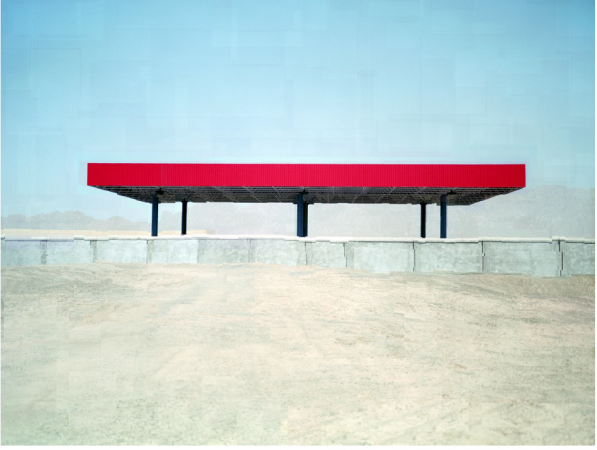
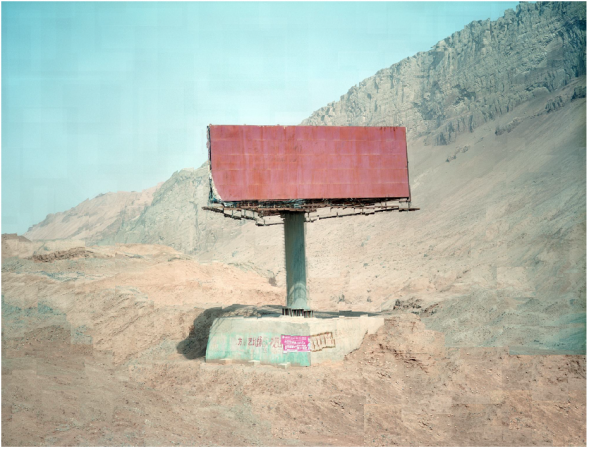

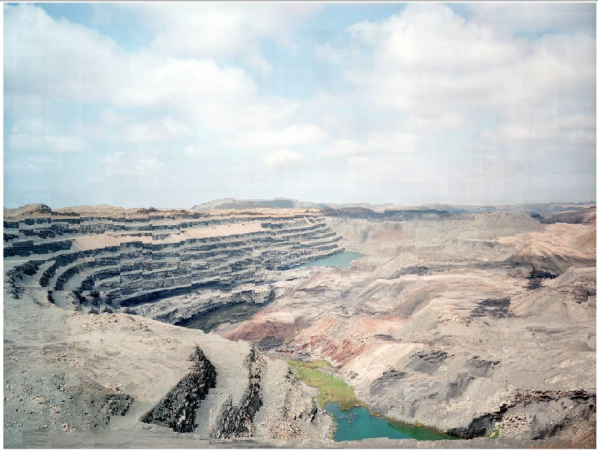
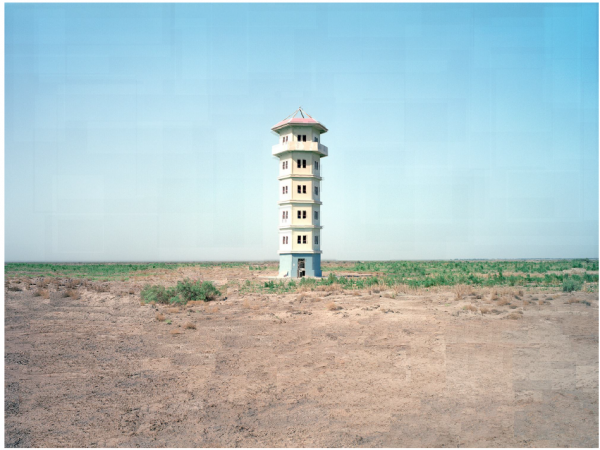
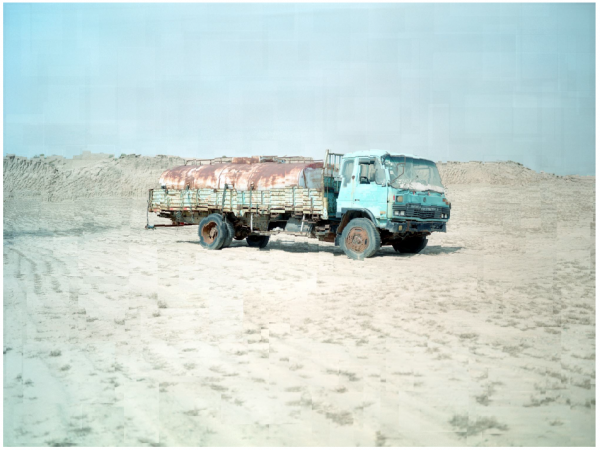
Florian Ruiz presents his Project 596, a photographic work realized from 2014 to 2019 in which the photographer focuses on the old salt lake Lop Nor, in China, located in Xinjiang province in the north-west of the country. Now almost dried-up, it served as a nuclear weapons testing site from 1964 to 1996. The first Chinese nuclear bomb test in 1964 was named “Project 596”. Nowadays, the region is still very contaminated and China recognized in 2008 the existence of health problems among civilians and military personnel due to radiation exposure. Florian Ruiz reveals the presence of the danger of radioactivity by measuring the radioactive contamination with a geiger counter. He wanted to show, by a digital process, a reality modified by the presence of invisible radioactivity. The process reinvents and twists the landscape, leading to a kind of vertigo or malaise, a threatening danger hidden behind the landscapes. Here too, Florian Ruiz succeeds in sublimating the ugliness of these spaces, creating pale blue landscapes.
Project 596 is a series resolutely representative of atmospheres. The photographer translates a subjective universe of impression: the image is present to translate the emotion, the feeling that a landscape gives us. Florian Ruiz shows us landscapes resulting from a chaotic and unstable world, while underlining the permanence of beauty within them.
2022
Seiiki
Paris Photo
11.10.2022 – 11.13.2022
The White contamination
Haute Photographie, Amsterdam
09.15.2022 – 09.18.2022
Seiiki
Art Paris
02.07.2022 – 07.10.2022
2021
The White Contamination
Art Paris
09.09.2021-09.09.2021
2020
Project 596 – The White Contamination
Photo LA
01.30.22 – 02.02.2022
2019
The White Contamination
The Photography Show by AIPAD fair, New York
04.04.2019 – 04.07.2019
2018
The White Contamination
Paris Photo FAIR
11.08.2018 – 11.11.2018
After studying law and history, Florian Ruiz develops a documentary approach to the desperate social world marked by disillusion. He then take a look at the intimacy of the prostitutes’ rooms at Pakistan, photograph the shipbreaking of Bangladesh and tell the story of a Mongolian mining town.
Settled for ten years in Tokyo, marked by the disaster of Fukushima, in his recent works, Florian Ruiz sought to test the bounds of photography by challenging its ability to put in image the invisible danger of the radioactivity. He is using assembly, collage, super impression; processes that reinvent and twist the very landscape.
His work was the object of numerous publications (Le Monde Magazine, Magazine European Photography…) and he was rewarded by several prices: Sony World Photography, QPN Award,Bourse du Talent, Felix Schoeller…)
© 2025 Galerie SIT DOWN – info@sitdown.fr – Tél : +33 (0)1 42 78 08 07 – 4, rue Sainte-Anastase – 75003 Paris – France – Ouverture du mercredi au samedi de 14h à 19h et sur rendez-vous.